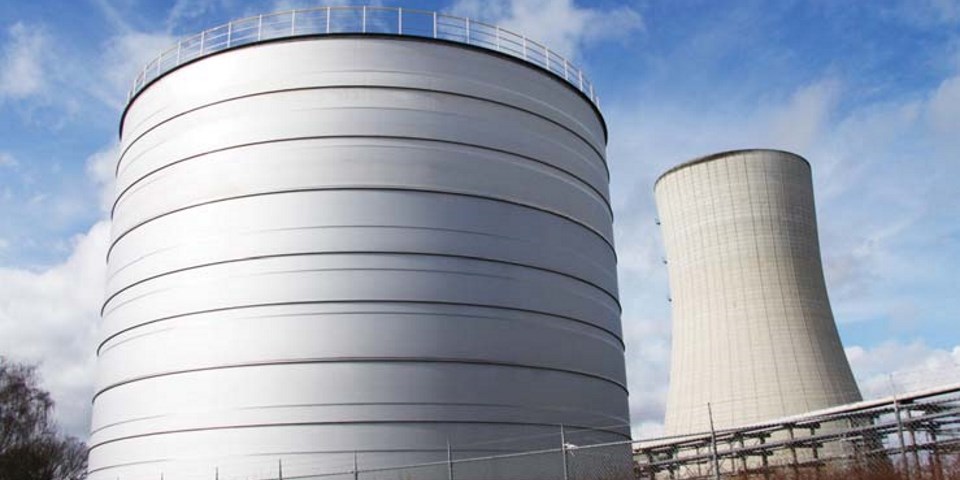^ The 7300m3 capacity duplex tank was designed to EN14015, the Europan norm for flatbottomed tanks.
Article by Joanne McIntyre, Stainless Steel World
Article by Joanne McIntyre, Stainless Steel World
___
The duplex tank was fabricated for USG Geleen in the Netherlands, which is part of the Chemelot industrial chemical park located in the south of the country. The new buffer tank will provide demineralized water for the various companies at Chemelot for many years to come. The project comprises a flatbottomed tank with a sump, with the sump alone having a volume of over 8000 litres. The tank also has a conical roof built to the EN 14015 standard with a vertex of 158 degrees, a diameter of nearly 23 metres, is strong enough to walk on and takes the overall height to over 20 metres. That gives a gross volume of approximately 7600m3 and a net volume of about 7300m3.
Both stainless steel 304 and duplex steel LDX2101 were used for the tank. The lower part of the body is constructed of LDX2101, which is stronger than SS304 and allows a thinner structure while retaining the structural strength. The tank floor, top and upper part of the body are made of SS304 as lower thicknesses are required there.
Working together with Emerson Process Management and Bilfinger Industrial Services, Gpi has provided a complete blanketing system for the tank along with the associated safety valves. In addition, Gpi has provided the intake and spare valves.
Duplex for tanks
Duplex stainless steels are increasingly used in the tank construction market. The stronger material characteristics relative to conventional austenitic stainless steels, such as 304 and 316L, allow fabricators to construct thinner shells. For larger tanks, this generally leads to an improved construction time and lower overall costs, while maintaining or even improving the corrosion resistance of the tank. Because of the large capacity and pressure requirements of the demineralized water tank, Gpi advised building the water tank in a combination of austenitic and duplex stainless steel in the versions 304 and LDX2101.
Application and weldability
The weldability of duplex stainless steels is slightly more difficult, as the material is less tolerant of faults than standard grades of stainless steel. In order to weld duplex stainless steels correctly, the correct choice of the welding methods, additive materials and correct procedures and conditions is absolutely necessary. The maximum operating temperature for duplex is approximately 250°C; above this temperature a structural change occurs, which is accompanied by a brittleness of the material and corresponding lowering of corrosion resistance.




